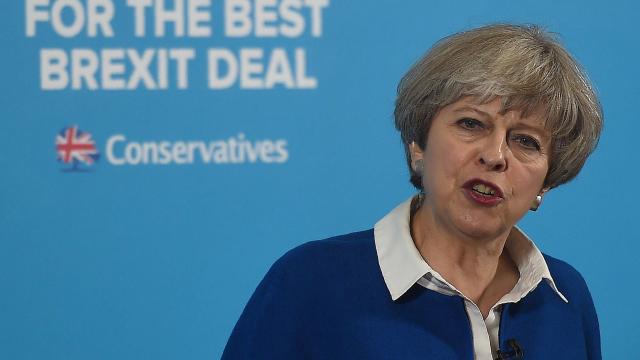What’s Being Done to Reduce the Poverty Rate in France ?
As April 15th’s devastating fire at Notre-Dame de Paris raged on, President Emmanuel Macron canceled his televised speech addressing the “yellow vest” movement and the great debate, scheduled for the same night. The so-called yellow vest protests have been an ongoing issue for Macron and the nation as a whole since December 2018. What began as a protest of an increased fuel tax has evolved into a broader call for social justice across France.
Protestors are calling for Macron to take measures to reduce the income disparity among French citizens. Macron’s tax policies, including the repeal of the wealth tax he implemented shortly after taking office in 2017, have given him the moniker “president of the rich.” While Macron is doing his part to shed his negative image, his 2018 anti-poverty plan may not be enough to help the 9 million French citizens living in poverty.
The €8 billion anti-poverty plan includes compulsory school or vocational school for students under the age of 18, an increase in emergency accommodations, especially for women and children, and primary school breakfasts for students in poor areas. Social benefits system reform is also part of the plan, according to Reuters. “Our welfare model, even if it corrects a little, even if it allows some to live better, does not do enough to prevent people falling into poverty, does not do enough to eradicate poverty,” Macron said in a statement announcing his plan.
It remains to be seen if Macron will further address welfare reform and poverty in future statements and policy changes, but many social organizations are stepping up to fill in the gaps and help reduce poverty at the national level.
The Rise of Global Poverty
In France, impoverished citizens are defined as those who make 60% or less of the national median income. Today, 14% of the population meets that criteria. France’s situation mirrors that of the U.S., where about 13.5% live in poverty, reports Ohio University. In both countries, children make up nearly a third of those living in poverty.
America has seen a recent increase in suburban poverty, at a rate of about 65% since 2003. In France, however, poverty rates are higher in cities and villages, especially in border towns near Belgium and Switzerland, and along the Mediterranean coast. In fact, some of the lowest poverty rates in France can be found in the western suburbs of Paris.
Despite a significant portion of the population struggling to meet their basic needs, France’s poverty rates pale in comparison to the numbers in Latin America. Just over 30% of the population within Latin America and the Caribbean live in poverty, and extreme poverty affects roughly 62 million people. The UN’s Economic Commission for Latin America and the Caribbean (ECLAC) defines extreme poverty as a living situation in which people cannot afford basic foodstuffs.
Struggling French Populations
France adopted a Human Rights Council (HRC) resolution in 1989 that identified a link between extreme poverty and human rights, yet food insecurity is a growing issue among poor French citizens in 2019. A Secours Populaire survey found that one in five French citizens cannot afford to eat three healthy meals a day. Further, nearly half of those living below the poverty line reported difficulty in obtaining food to eat.
Single parents, young people, and the elderly are among those most affected by poverty in France, according to a report from the L’Observatoire des inégalités, an independent social justice organization. The report further notes that poverty disproportionately affects non-high school graduates, and the organization believes that Macron’s anti-poverty plan does not adequately address the root causes of poverty, including underemployment and low incomes.
Another portion of the population facing high rates of poverty are those in the LGBTQ community. Studies show that American LGBTQ individuals are less likely to have health insurance than the general population, and more likely to live in poverty internationally. While France-specific data is unavailable, “an estimated 23 percent of gay and bisexual American males live below the poverty line,” reports Bradley University. That number is significantly higher than the overall national poverty rate and is indicative of a widespread global problem.
Solving the Poverty Crisis
It’s too soon to tell if Macron’s anti-poverty plan will ultimately achieve its aims, but French citizens have other avenues to turn to for financial help. In 2016, the National Fuel Poverty Observatory (ONPE) found that 6 million people are living in fuel poverty, meaning they spend at least 10% of their income on energy bills.
The previous year, an energy transition law was passed in an effort to combat those numbers, which provides a check to low-income households to be used towards paying energy bills. But the ONPE believes that the energy checks aren’t substantial enough to reduce fuel poverty numbers.
One organization making strides toward the eradication of poverty is Secours Catholique-Caritas France. Its network of 67,900 volunteers across the country provide a variety of services to low-income French communities. In 2016 alone, the organization put together 30,000 reasonably priced baskets of fruits and vegetables to be sold by the Jardins de Cocagne. Secours Catholique also helped support France’s “zero long-term unemployment” initiative, a pilot project initiated in 10 experimental areas. As of 2018, the project has resulted in 400 people finding long-term employment.
As yellow vest protests continue, the French government must find new ways to address social justice issues within its borders, including poverty and income disparity. The future of France hangs in the balance.
Guest Article by Dan Matthews




